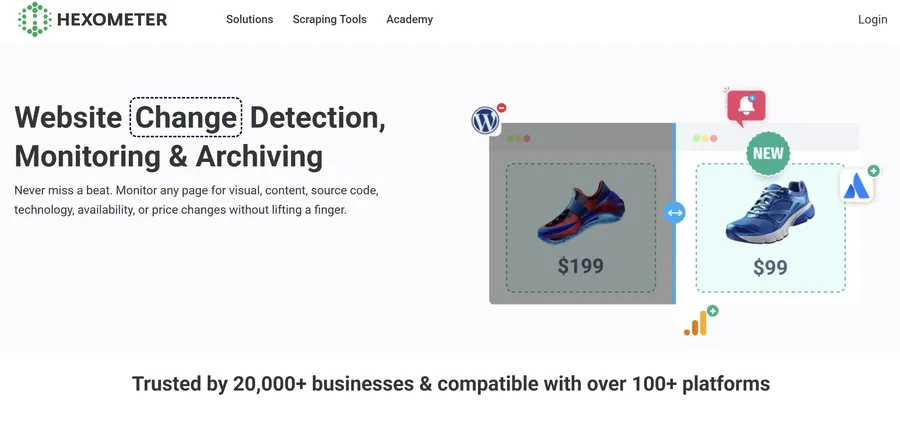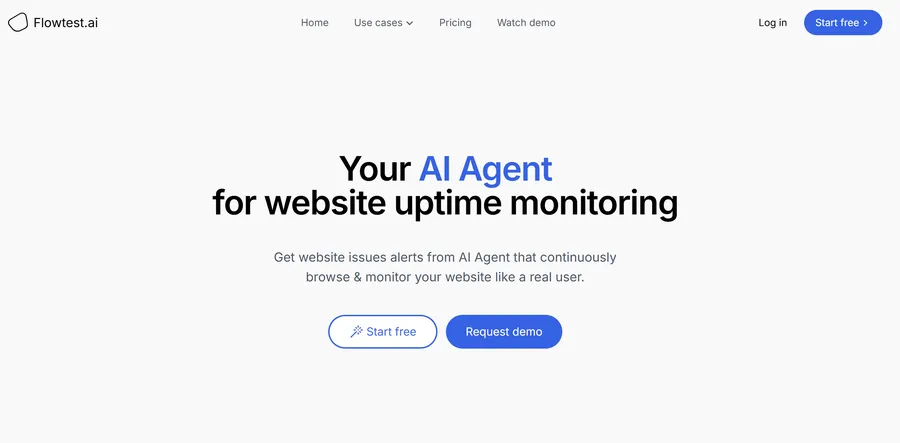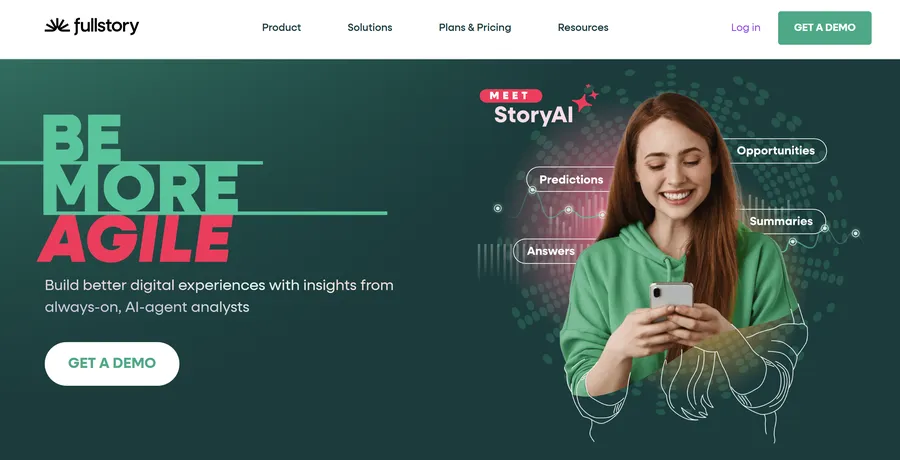In the past, we relied on luck or occasional manual checks to find these issues. That approach is no longer sustainable. This shift is part of a broader trend where the best AI automation tools are redefining how we manage digital assets. AI for website performance acts as a 24/7 guardian, analyzing data patterns that human eyes often miss. It allows you to fix problems before they cost you revenue.
In this guide, we will explore the best AI website optimization and automated page speed tools to turn your website into a reliable growth engine.
Eduma – Education WordPress Theme
We provide an amazing WordPress theme with fast and responsive designs. Let’s find out!
What Marketers Need From AI Monitoring
Web developers often view monitoring as simply checking if a server is online. Marketers need more. We need to know how technical performance impacts real-world revenue, social media management campaigns, and search rankings.
Using AI for website performance bridges the gap between code and customer satisfaction. These tools do not just report errors; they provide context. For this reason, performance monitors are quickly becoming must-have digital marketing tools alongside your analytics and ad platforms.
By using advanced AI speed optimization tools, you can identify the specific friction points that cause potential customers to leave your site.
Key Metrics for Lead Generation
To protect your leads, you must look beyond basic uptime. Here is what these tools analyze:
- Page Load Time: Speed builds trust. AI monitors this globally to ensure fast access for every visitor, which is essential for retaining traffic.
- Core Web Vitals: AI website optimization tracks these Google metrics to ensure your visual stability meets modern standards.
- Bounce Rate: AI analysis correlates engagement drops with specific technical faults. While your team focuses on content marketing and strategy, AI ensures the technical platform doesn’t drive those readers away.
- UX Friction Points: AI detects “dead clicks” and errors that damage the overall user experience.
The Best AI Website Monitoring Tools
Here is the complete list of tools highlighted for marketing teams, including specialized solutions for testing and data analysis.
1. Cloudflare

Cloudflare describes itself as a “connectivity cloud” that delivers over 60 networking, security, and performance services. It is widely known for its ability to speed up WordPress website performance globally. By leveraging traffic intelligence and bot management, Cloudflare ensures your website remains fast and secure against threats like DDoS attacks.
Key Features
- Traffic Intelligence: Accelerates performance and improves reliability by routing traffic efficiently across a global network.
- Bot Management: Uses AI to stop malicious bot attacks in real-time while allowing legitimate users to pass.
- Image Optimization: Automatically transforms and optimizes images to reduce load times without sacrificing quality.
- Connectivity Cloud: A unified platform that protects apps, APIs, and AI workloads against unauthorized access.
Best For
Organizations of all sizes, from small businesses to large enterprises, looking to modernize their network security and accelerate web performance.
2. Hexometer

Hexometer acts like a smart, tireless assistant for your digital storefront. It is designed for businesses that cannot afford any downtime. The platform monitors your entire digital presence continuously to ensure everything is functioning correctly. It covers six core areas, including uptime, performance, and security, making it a comprehensive solution for website health.
Key Features
- Uptime Monitoring: Verifies that your website is accessible to users 24/7.
- Health Scans: Automatically detects broken links, script errors, and missing files.
- User Experience (UX) Checks: Identifies spelling mistakes and display errors across different devices.
- Instant Alerts: Sends notifications via Slack, email, or SMS the moment an issue arises.
Best For
Ecommerce businesses and agencies that need a rigorous, all-in-one health monitor to protect sales and revenue.
3. Flowtest.ai

Flowtest.ai addresses a specific challenge for marketers: testing complex user journeys. As one of the newer AI speed optimization tools, it acts as a QA tester that never sleeps. It ensures that critical paths, such as checkout processes and registration forms, work perfectly after every website update. It adapts to changes automatically, saving your team from constant reconfiguration.
Key Features
- Codeless Setup: You can instruct the AI to test specific paths using plain English commands.
- Adaptive Agents: The AI adapts to minor design changes without causing false error reports.
- Visual Verification: It simulates a real human visitor using a mouse and keyboard to interact with your site.
Best For
Marketers who update their landing pages frequently and need an automated agent to test payments and forms.
4. New Relic

New Relic provides professional-grade data analysis. Its Website Performance Monitoring (WPM) module uses AI for website performance to establish a baseline for your site. It understands what “normal” performance looks like and alerts you immediately when things deviate. It is similar to Google PageSpeed Insights but offers continuous history and proactive suggestions.
Key Features
- Global Analysis: Tests your site speed from various locations around the world.
- Synthetic Monitoring: Checks your website continuously, minute by minute, to build a performance history.
- Anomaly Detection: It filters out noise and only alerts you to significant performance drops.
Best For
Data-driven teams who need deep technical insights and continuous tracking of Core Web Vitals.
5. Fullstory

While other tools check code, Fullstory checks behavior. Its “StoryAI” feature analyzes thousands of user sessions to uncover why people are leaving your site. It is a critical component of a modern AI website optimization strategy. It allows you to move beyond synthetic bots and understand the actual human experience on your pages.
Key Features
- AI Summaries: Condenses vast amounts of user data into clear, actionable insights.
- Conversational AI: Allows you to ask questions like “Why did mobile conversions drop?” and get a data-backed answer.
- Friction Detection: Highlights moments of user frustration, such as rage clicks or scroll errors.
Best For
Marketing teams focused on Conversion Rate Optimization who need to understand the human side of the data.
How to Evaluate These Tools
Selecting the right software does not require an engineering background. You can follow this simple evaluation process:
- Define Your Goals: Decide if you need to fix technical errors or understand user behavior.
- Look for No-Code Options: Choose AI speed optimization tools that are easy to implement. You should be able to start with just a URL.
- Utilize Free Trials: Connect the tool to your live site for two weeks. Compare the automated page speed reports against your own analytics.
- Check Connectivity: Ensure the tool integrates smoothly with your current workflow, such as Slack or your CRM.
- Calculate ROI: Measure how much revenue you save by fixing errors faster.
Conclusion
Integrating AI for website performance into your marketing strategy is a smart investment. It allows you to automate the mundane task of monitoring so you can focus on growth and strategy.
Whether you choose a behavioral tool like Fullstory or a health monitor like Hexometer, the goal is the same: a fast, reliable experience for your users. By adopting these solutions, you ensure that your website remains a reliable engine for your business success.
Frequently Asked Questions (FAQs)
1. Is AI for website performance difficult to set up?
No, most modern tools are built for marketers rather than developers. Many platforms allow you to start monitoring by simply entering your website URL, making the process very accessible.
2. How does automated page speed monitoring help SEO?
Search engines prioritize user experience. By using these tools to identify and fix speed issues, you directly improve your Core Web Vitals. This sends positive signals to search engines, which can help improve your rankings.
3. What is the difference between synthetic and real-user monitoring?
Synthetic monitoring uses a bot to simulate a user to ensure the system works, which is great for catching errors early. Real-user monitoring tracks actual human visitors on your site. A complete strategy usually involves both types.
4. Can these tools detect security risks?
Yes, many monitoring tools include security scans as part of their package. They can alert you to expired SSL certificates, exposed files, or potential vulnerabilities, adding an extra layer of protection to your site.
5. How often should I check these reports?
While the AI monitors your site 24/7, you should review the insights weekly. This helps you spot long-term trends and plan necessary updates. However, you should always respond to critical downtime alerts immediately.
Read more: 10 Best Ahrefs Alternatives: Top SEO Tools Ranked
Contact US | ThimPress:
Website: https://thimpress.com/
Fanpage: https://www.facebook.com/ThimPress
YouTube: https://www.youtube.com/c/ThimPressDesign
Twitter (X): https://twitter.com/thimpress


